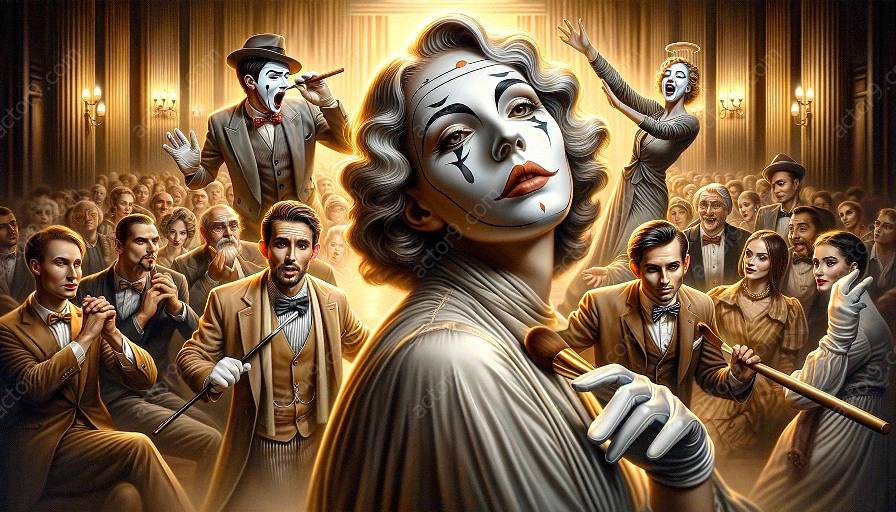If you aspire to become a successful mime artist or physical comedian, it’s essential to master the art of physical and vocal training. By incorporating proven techniques and learning from renowned professionals in the field, you can enhance your skills and develop a unique style that captivates audiences. This comprehensive guide explores various training methods, tips, and insights to help you achieve success in mime and physical comedy.
Understanding Mime and Physical Comedy
Mime is a form of performance art that involves using exaggerated physical gestures and expressions to convey emotions, actions, or stories without the use of spoken language. It often requires precise body movements, facial expressions, and gestures to create a compelling narrative or engage the audience. On the other hand, physical comedy relies on exaggerated movements, slapstick humor, and comedic timing to entertain and evoke laughter. Both mime and physical comedy demand physical and vocal dexterity and require performers to undergo rigorous training to excel in their craft.
Famous Mime Artists and Physical Comedians
Studying the work of famous mime artists and physical comedians can provide valuable insights and inspiration for aspiring performers. Renowned figures such as Marcel Marceau, Charlie Chaplin, Buster Keaton, and Rowan Atkinson have left a lasting impact on the world of mime and physical comedy through their innovative techniques and iconic performances.
Marcel Marceau
Marcel Marceau, often referred to as the “master of mime,” was renowned for his silent stage performances and his character “Bip” who became a symbol of mime art. His use of subtle gestures, body language, and facial expressions set a benchmark for aspiring mime artists.
Charlie Chaplin
Charlie Chaplin is celebrated for his impeccable physical comedy and iconic character, “The Tramp.” His ability to infuse humor into everyday movements and situations made him a beloved figure in the world of entertainment, inspiring generations of performers.
Buster Keaton
Buster Keaton’s remarkable stunts and deadpan expression made him a pioneer in physical comedy. His fearless approach to executing daring physical feats continues to influence contemporary performers and filmmakers.
Rowan Atkinson
Rowan Atkinson, known for his portrayal of “Mr. Bean,” has garnered worldwide acclaim for his comedic timing and physical humor. His ability to elicit laughter without uttering a single word exemplifies the power of physical and vocal expression in comedy.
Physical and Vocal Training Techniques
1. Body Awareness and Control
Developing a keen sense of body awareness and control is fundamental for mime artists and physical comedians. This involves mastering precise movements, understanding spatial awareness, and honing physical coordination to effectively convey emotions and actions through body language.
2. Vocal Exercises
While mime largely relies on non-verbal communication, vocal exercises can aid in enhancing the overall performance. It's essential to maintain vocal flexibility and control to complement the physical aspects of the act.
3. Gesture and Expression Practice
Practice various gestures and facial expressions to convey a wide range of emotions. Understanding how to use subtle movements and expressions can add depth and nuance to performances, captivating the audience through visual storytelling.
4. Improvisation and Creativity
Encourage improvisational exercises to foster creativity and spontaneity. This allows performers to adapt to different scenarios, expand their repertoire, and infuse fresh elements into their acts.
5. Physical Endurance and Fitness
Mime and physical comedy demand physical stamina and endurance. Incorporating fitness routines and exercises can help performers maintain the energy and agility required for dynamic performances.
Embracing the Art of Mime and Physical Comedy
Embracing the art of mime and physical comedy requires dedication, perseverance, and a commitment to continuous improvement. By studying the techniques of famous mime artists and physical comedians, aspiring performers can gain valuable insights and refine their skills. Through rigorous physical and vocal training, performers can master the art of non-verbal communication and comedic expression, captivating audiences with their unique performances.


























